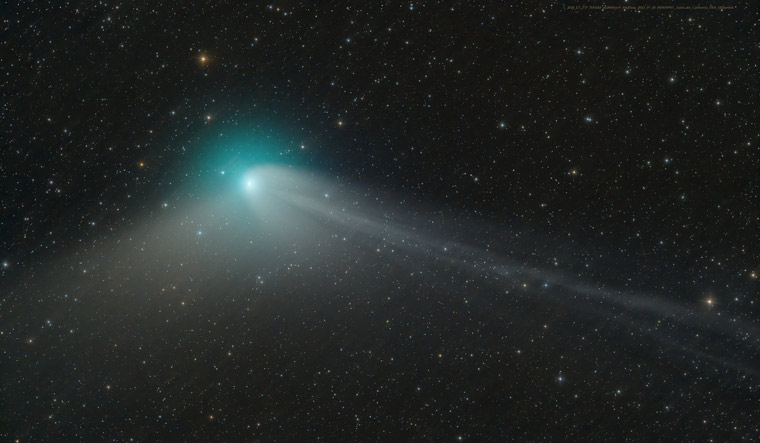A green comet, which last visited 50,000 years ago, will fly past the Earth this week. It will come as close as 42 million kilometers of Earth on Wednesday before moving away again, unlikely to return for millions of years.
On Wednesday, it will hurtle between the orbits of Earth and Mars at a relative speed of 207,000 kilometers. Its nucleus is thought to be about 1.6 kilometers across, with its tails extending millions of kilometers.
The green comet, whose formal name is C/2022 E3 (ZTF), was discovered on March 2, 2022, by astronomers using the Zwicky Transient Facility telescope at Caltech's Palomar Observatory in San Diego.
Why is it called green comet ?
Its greenish, emerald hue reflects the comet's chemical composition—it is the result of a clash between sunlight and carbon-based molecules in the comet's coma
How to view the comet from India
The rare visitor is expected to brighten as it draws closer and rises higher over the horizon through the end of January or early February. best seen in the predawn hours.
It wil be visible in the northern night sky with binoculars and small telescopes, and possibly the naked eye in the darkest corners of the Northern Hemisphere. Skygazers in the Southern Hemisphere will have to wait until next month for a glimpse.
Finding a remote location to avoid light pollution in populated areas is key to catching a nice view of the comet as it journeys past our planet heading away from the sun and back toward the solar system's outer reaches.
You may be able to see the comet with your naked eye, when the comet is expected to be in the highest point of the sky, and when it will be situated at about 45-degrees above the northern horizon. However, using a pair of binoculars or a telescope would be easier.
James Webb Space Telescope
NASA plans to observe the comet with its James Webb Space Telescope (JWST), which could provide clues about the solar system's formation."We're going to be looking for the fingerprints of given molecules that we can't access from the ground," said planetary scientist Stefanie Milam of NASA's Goddard Space Flight Center in Maryland. "Because JWST's so sensitive, we're expecting new discoveries.
“It will be bright by virtue of its close Earth passage ... which allows scientists to do more experiments and the public to be able to see a beautiful comet,” University of Hawaii astronomer Karen Meech said in an email to the Associated Press.



